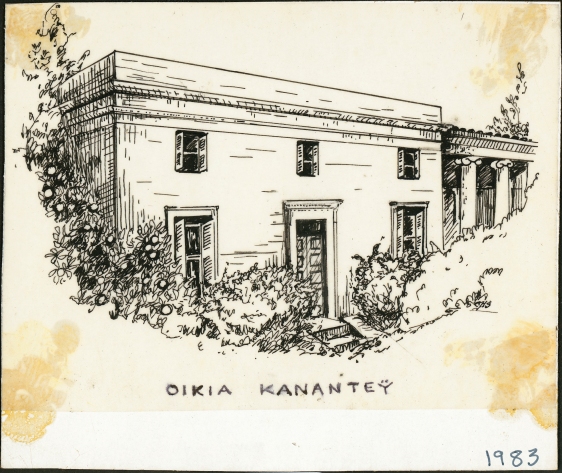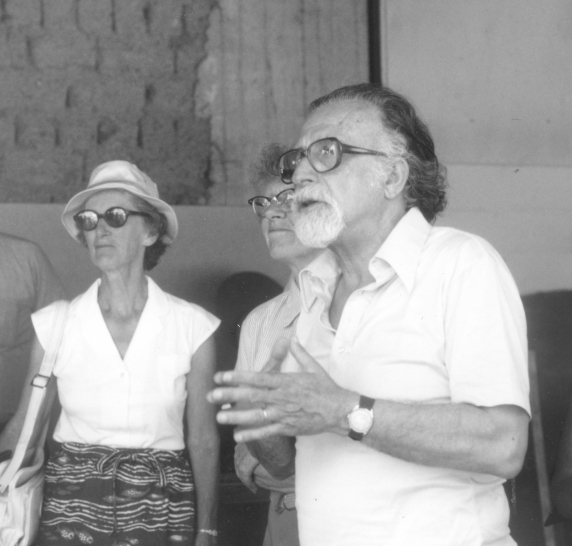“They returned… but stay I did”: Doreen Canaday’s Experience of Interwar Greece
Posted: October 3, 2018 Filed under: Archaeology, Archival Research, Biography, Book Reviews, Classics, History of Archaeology, Philhellenism, Women's Studies | Tags: Doreen Canaday Spitzer, Mariam Coffin Canaday, Ward Canaday 1 CommentI first encountered the name “Canaday” in the mid-1980s when I went to Bryn Mawr College for graduate school. Although we did most of our work in the seminar rooms above the Art and Archaeology Library (now the Rhys Carpenter Library), for books and periodicals about history or classics we had to go to the “big library,” which was none other than the Mariam Coffin Canaday Library.
A few years later when I returned to Greece to participate in the regular program of the American School of Classical Studies at Athens (ASCSA, or the School hereafter), I heard people referring to Canaday House. One of the two marble houses flanking the Gennadius Library at 61 Souidias, it housed temporarily the family of the then Director of the School William (Willy) D. E. Coulson. (The big earthquake of 1986 in Kalamata had caused damages to the Director’s residence across the street.)

An ink drawing of the Canaday House at the American School of Classical Studies at Athens. ASCSA Archives, Doreen Canaday Spitzer Photographic Collection.
Finally, in the summer of 1990, while digging at Mochlos on Crete, I met Doreen Spitzer on one of the “On-Site with The American School of Classical Studies at Athens” trips that she had been organizing for years, but without realizing that Doreen Spitzer’s maiden name was Canaday. It was only after I started working as the School’s Archivist that I became aware of Canaday Spitzer’s long legacy at the American School. Doreen Canaday Spitzer (1914-2010) served as a Trustee 1978-1996, President of the Board of Trustees 1983-1988, Trustee Emerita from 1996 and President of the Friends from 1988 until her death in 2010. (There is a thorough biographical essay about Doreen Spitzer by Catherine de Grazia Vanderpool in AKOUE 63, Fall 2010.) Her father, Ward Canaday (1885-1976), had also served as a Trustee of the School for almost four decades starting in 1937.

Doreen Canaday Spitzer listening to Manolis Andronikos, excavator of the royal tombs at Vergina, 1981. (Between them, barely visible, Machteld Mellink.) Source: ASCSA Archives.
Spitzer also cared deeply about preserving the School’s history and supported wholeheartedly the creation of an Archives Department during her term as President of the Board. Furthermore, she would contact School members, many of whom she knew personally from her time as a student of the School in 1936-1938, to solicit their personal papers. No wonder why my formal title is the Doreen Canaday Spitzer Archivist. Needless to say that it would have pleased her immensely to see our new and enlarged facilities at the East Wing of the Gennadius Library. Read the rest of this entry »
The Magnificent Mayer House: No Such a Thing as a Free Gift
Posted: February 1, 2018 Filed under: Archival Research, Arts and Crafts Movement, History of Archaeology, Jewish Studies, Women's Studies | Tags: American School of Classical Studies at Athens, Clara W. Mayer, Doreen Canaday Spitzer, Ludmila Schwarzenberg, Mayer House, Richard H. Howland 5 CommentsDedicated to Ludmila Schwarzenberg Bidwell
“Following a decision by the Board of Trustees at their November 1997 meeting, the U.S. base for School activities since 1974, was put on the market and sold in May for $5,850,000.” This story appeared in the summer issue of the 1998 ASCSA Newsletter (“Mayer House Sold,” no. 41, p. 4). By then, the U.S. base of the American School of Classical Studies at Athens (ASCSA or School hereafter) had already been transferred to Princeton. That fall I was invited by Catherine Vanderpool, the School’s Executive Director in the U.S., to visit Princeton for two reasons: to meet Homer A. Thompson who was contemplating the idea of leaving his personal papers to the School (which he did) and to examine a large number of boxes containing the administrative records transferred to Princeton after the sale of the Mayer House. Many of the records had been damaged by flooding that precipitated the sale of Mayer House.

Mayer House, entrance. Photo: Natalia Vogeikoff-Brogan, 2014.
Built in 1882, the four-story brownstone house was one of nine houses on East 72nd Street from no. 39 to 55. The family of Bernhard and Sophia Mayer had moved into the neighborhood in 1899 after purchasing a pair of brownstones in the row at no. 16 and no. 41. (I draw some of this information from the Daytonian in Manhattan, a blog about the architectural history of New York city.) Two family members were later active in New York’s intellectual and academic circles. Albert Meyer (1897-1981), an architect and city-planner, designed many apartment buildings in New York, as well as the master plan of Chandigarh, the new capital of the Indian Punjab. His older sister Clara (1895-1988) was an educator and associated with the New School for Social Research for more than thirty years. She served as Dean of its School of Philosophy and Liberal Arts (1943-1960), and from 1950 to 1962 also as Vice President of its Board. Read the rest of this entry »
Skyromania? American Archaeologists in 1930s Skyros
Posted: June 1, 2016 Filed under: Archaeology, Archival Research, Greek Folk Art, History of Archaeology, Mediterranean Studies, Modern Greek History | Tags: Carol Bullard, Doreen Canaday Spitzer, Dorothy Burr Thompson, Faltaina Kalimeri Peschke, Georg von Peschke, Αngeliki Hatzimichali, Σκύρος, Richard H. Howland, Skyros 9 Comments“The island of Skyros is fairly remote and inaccessible, on account of the winds. One consequence of its geographical location is that there is very little information about the island in the ancient authors, and the picture also given by the travelers is also fragmentary,” archaeologist Efi Sapouna-Sakellaraki could write in her archaeological guide to Skyros, as recently as 1998. Before her, American archaeologist Hazel Hansen, in writing about prehistoric Skyros in 1951, similarly described the island as “one of the most solitary islands in the Aegean for nearly all the other islands are nearer to one another or to the mainland.” Its isolation and the capricious sea between it and the mainland and Euboea are the reasons why Skyros is far less frequently visited…”.
“To deaccession, or not to deaccession?” Paul Manship’s Actaeon and the American School of Classical Studies at Athens
Posted: June 1, 2014 Filed under: Art History, History of Archaeology | Tags: Actaeon, American School of Classical Studies at Athens, Diana, Doreen Canaday Spitzer, Paul Manship 2 CommentsRevised on August 3, 2022, after it was discovered that the bronze carries Manship’s signature. New photos were added.
This is the question that Doreen Canaday Spitzer, President of the Board of Trustees of the American School of Classical Studies at Athens (1983-1988), posed in a memo to board members on January 25th, 1988. But why would the School ever consider putting up its valuable possessions on the market (the others mooted for sale included Amory Gardner’s portrait by Anders Zorn and a Tiffany lamp once owned by Carl and Elizabeth Blegen)? Because there was immediate pressure to secure funding for the construction of the New Extension of the Blegen Library. It was Richard H. Howland, former chairman of the Managing Committee and Trustee of the American School, who brought Doreen’s attention to the significant value of Paul Manship’s bronze Actaeon and the financial benefits the School would gain from its sale.




Paul Manship (1885-1966) was an American sculptor from Minnesota whose work can be seen in several public buildings and museums; he is also known for his low relief work on coins and medals, including the John F. Kennedy inaugural medal. His small bronzes are auctioned for several hundred thousands of dollars. The Dancer and the Gazelles (1916) was sold for $434,000 in a Bonhams’ auction in 2009, while the group of Diana and Actaeon was sold for more than a million at Christies in 2015. It is certain that the sale of the single Actaeon in the late 1980s could have brought two or three hundred thousand dollars to the School. Prudence, however, prevailed because a few months later, in May of 1988, Spitzer stated “I believe the [Manship] bronze should not be considered as a source of funds for the Blegen [Library], or any other expansion. We are obliged to raise much more, in any case, than it should bring…” Doreen, with typical frankness, further admitted that “Yes, I argued for selling it, but I did not succeed in convincing myself! Yes, ‘the School is not a Museum,’ but neither is it a factory. It is a cultural institution. We appreciate nice furniture; handsome green and gold china from 9 Plutarch St. [she refers to the house where Carl and Elizabeth Blegen lived] is preferable to cafeteria crockery.” By November of 1988, the Trustees had voted to have the Manship bronze insured together with the portrait of Amory Gardner by Anders Zorn) and the Tiffany lamp that once belonged to the Blegens (for the Zorn portrait see an earlier post).
Read the rest of this entry »

